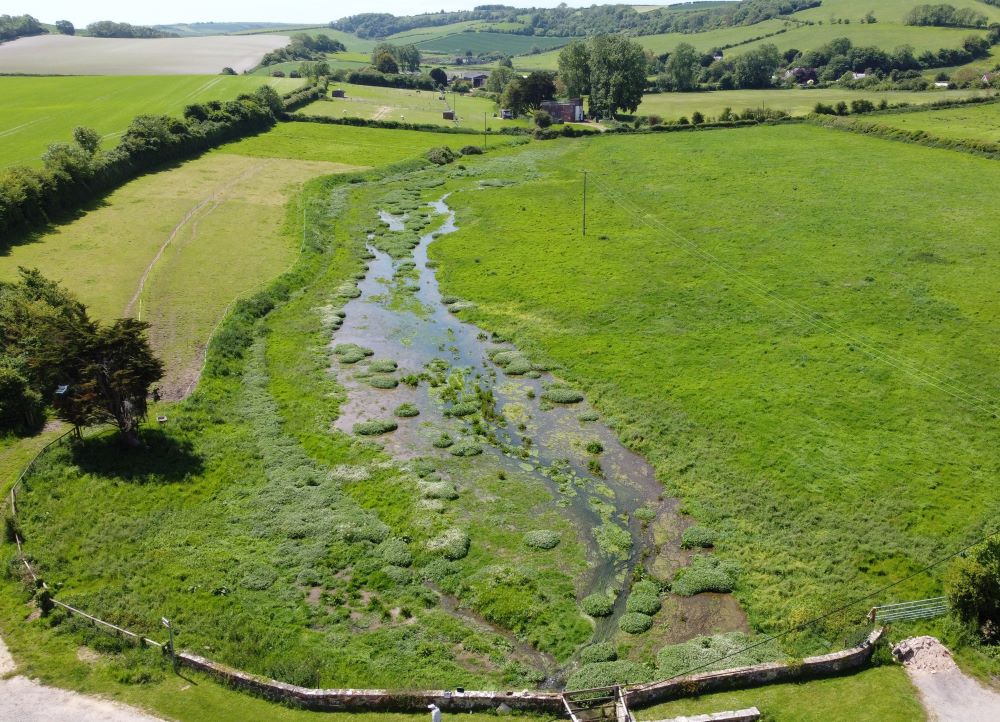
From zero to hero: innovative river restoration reaps rewards
A technique that encourages rivers to re-shape themselves has transformed a precious Isle of Wight chalk stream.
Stage Zero Restoration (SZR) is an approach popular in the USA and gaining traction in the UK in which rivers are reconnected with their floodplains. With minimal human intervention, the river finds its own course, developing a network of small channels and natural wetlands. As with similar ‘rewilding’ methods the technique may be less ‘tidy’ than standard river restoration but it’s proven to be good news for nature.
As part of an overall £1 million restoration project, the SZR method has brought new life to the Lukely Brook, which flows through the heart of Carisbrook and Newport. The river is now home to increased aquatic life, new bird species and thriving vegetation, as well as benefitting from improved water quality and reduced flood risk.
It's the first time we have used the restoration technique, in an ambitious project we have been leading in collaboration with key partners including the Newport Rivers Group and Island Rivers Partnership, multiple landowners, the Environment Agency, and the Isle of Wight Council.
Under the scheme, small ‘leaky’ wooden structures of logs and bundles of small branches were used to partially block the channel, causing water to spill out onto the floodplain and develop a series of small, braided channels and wetland features. These not only help to maintain wetter conditions on the floodplain during drought but also filter sediment and pollutants, improving water quality downstream.
For generations, the Lukely Brook has been affected by pressures impacting its natural balance and ecological resilience. Historic fords, mills, agriculture and urbanisation have all played a role in shaping its recent state.
Our Water Resources Environmental Resilience Strategy Manager Chris Woolhouse, said:
“By encouraging the river to find its natural path, it’s now healthier than it’s been for a very long time.
“We’re seeing an abundance of freshwater shrimp and mayflies – great indicators of a thriving watercourse - plus sightings of wetland bird species including Little Egret and Grey Heron that weren’t present when the water was confined to a single channel. There are also all kinds of new vegetation, which are supporting these eco-systems.
“Although we know how effective Stage Zero Restoration can be, this is the first project we’ve used it on in our region and it’s been thrilling to see first-hand just how well it works.”
In addition to SZR, the Lukely Brook project has introduced four separate fish and eel ‘passes’ where historic weirs were preventing fish movement. Modifications have been made at Sheepdip Weir, where the Froglands Stream channel was realigned to join the Lukely Brook, improving flows and creating new habitat along with a new footbridge. In Spring Lane Ford in Carisbrooke work included reducing overshading of the channel to encourage chalk stream plants to flourish, along with improving water flows and depth. Terraced public seating has also been created at Towngate Pond in Newport, using materials re-purposed from a small rock weir that was removed to encourage increased fish passage.
Southern Water committed to the Lukeley Brook project as part of the Water Industry National Environment Program (WINEP). The company abstracts groundwater from the chalk aquifer in the Lukely Brook catchment to supply homes and businesses across the Isle of Wight and must ensure that sufficient water remains in the environment to support aquatic habitats and ecology. The company has reduced the maximum amount of water it can abstract to further safeguard the health of the river, particularly during dry summer months.
Chris added:
“As well as demonstrating a new model for river restoration, the Lukely Brook project is a shining example of how partnerships can deliver lasting environmental and community benefits.
“Together, we've built a model for sustainable water management that will protect both nature and the local community for generations to come, ensuring water for life.”
